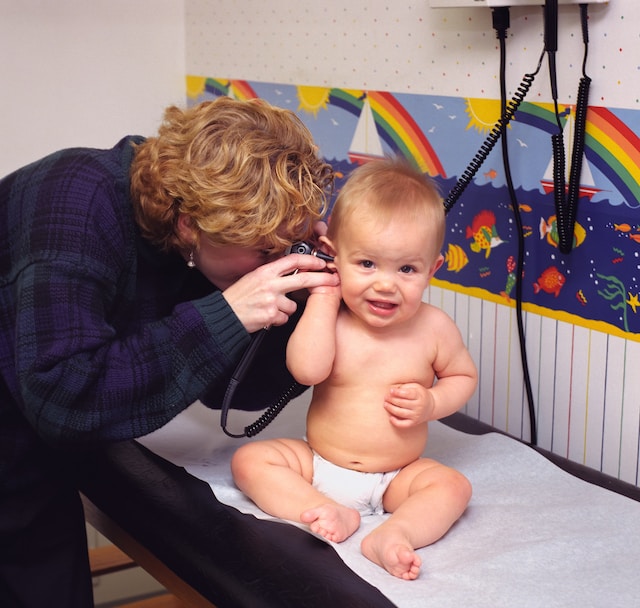Earwax is naturally produced in the ear primarily for protection. It prevents dirt and dust from reaching the inner ear. It also forms a waterproof lining that protects the eardrum from moisture.

Ideally, earwax should drain away from the ear. However, it can sometimes accumulate in the ear canal in kids, causing earwax impaction. Most mothers prefer cleaning their children’s ears. While this can work, it is prudent to consult a professional from HearCanada for help.
What are the Symptoms of Earwax Buildup?
Earwax or cerumen impaction affects 10% of kids because they have a small ear canal. Common symptoms of cerumen buildup include:
- Progressive hearing loss
- Otalgia or ear pain that affects their activity at home
- Dizziness
- Itchy ear canal
- Odor and discharge from the ear canal
Children with Down syndrome, ear trauma, and chronic ear infection are specifically at high risk for earwax buildup.
Should Earwax Be Removed?
Ideally, you shouldn’t remove earwax because it drains by itself. Sticking cotton swabs and other solid objects into your child’s ear can damage the fragile ear canal or eardrum and introduce infection. That said, parents shouldn’t be quick to find ways of removing earwax from their child’s ear unless directed by a doctor. However, if your child shows symptoms of discomfort in the ear and there’s visible earwax, you should wipe the external ear with a warm washcloth.
How to Remove Excess Earwax From Your Child’s Ear
Earwax shouldn’t be touched unless it’s causing severe symptoms and progressive hearing loss. However, you can try the following options to remove excessive earwax from their children’s ears.
- Use wax softening agents – Wax-softening agents soften impacted cerumen. They are available as non-water/non-oil based, water-based, or oil-based oil drops you can buy over the counter from the pharmacy.
- Manual removal – You shouldn’t attempt removing impacted earwax using a solid object. Doing so can push it further and possibly damage the eardrum. However, pediatricians can remove impacted earwax using a curette. Manual removal is the last resort and a good option for kids with eardrum trauma. It isn’t a good option for kids with bleeding disorders.
- Irrigation – It essentially involves flushing out earwax buildup using a fluid. It should be done in a clinic or doctor’s office, and not a good option for children with high risk for ear infections.
When to Call a Doctor
Earwax accumulation isn’t a serious health issue. However, you should call a doctor if your child complains of ear pain, itchiness, or hearing difficulties. For infants and toddlers who can’t communicate, tugging their ears is a sign of ear problems. Your doctor will remove the impacted earwax using different methods and check for possible ear infections.
Endnote
Earwax impaction is a common ear health problem affecting young kids. Whether you are a first-time or seasoned mother, you shouldn’t rush into sticking solid objects, including cotton swabs, in your child’s ear. You should also avoid ear candling and other procedures without proven safety and efficacy. Visit an audiologist if your baby demonstrates visible discomfort and regularize health screening.